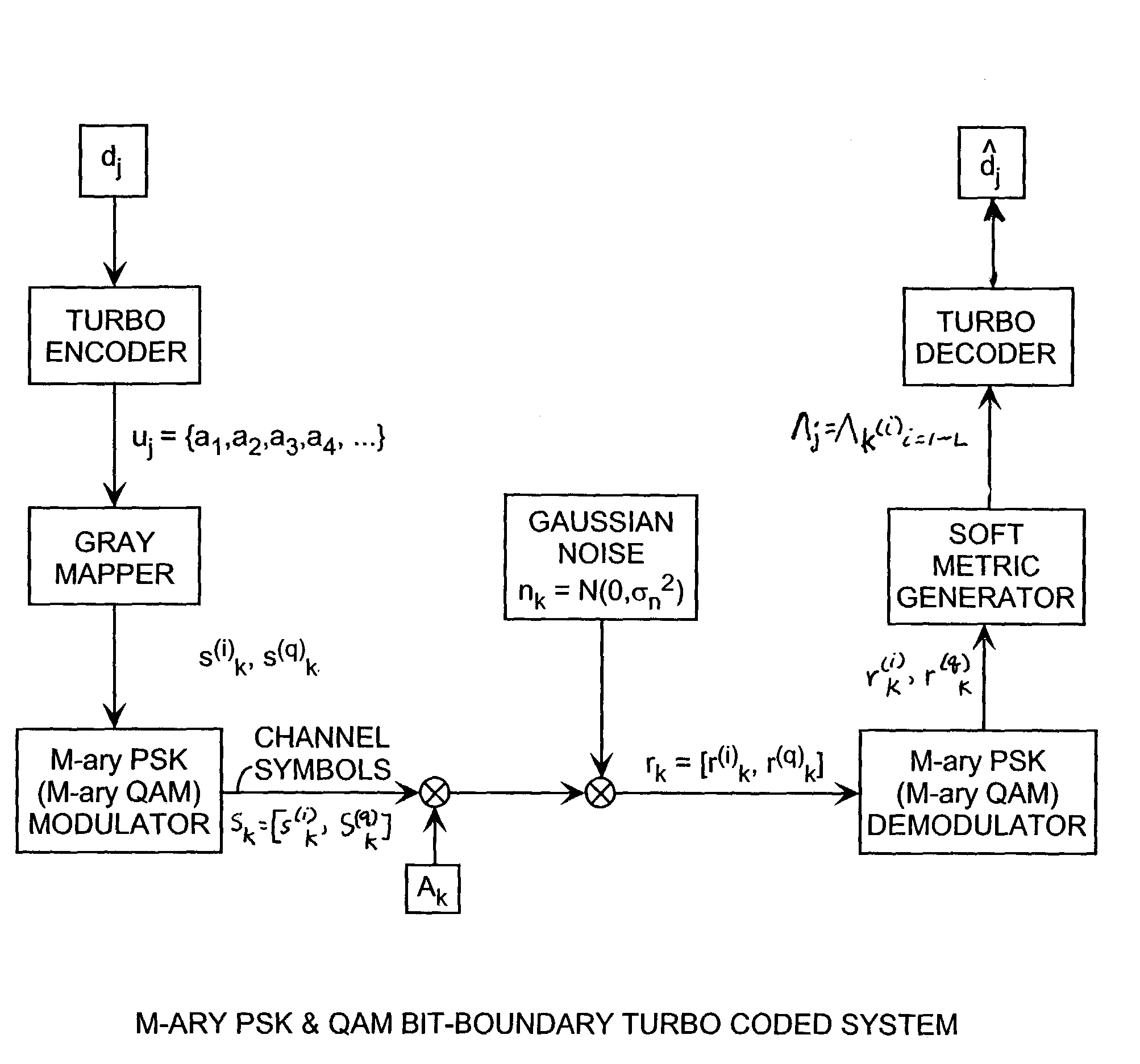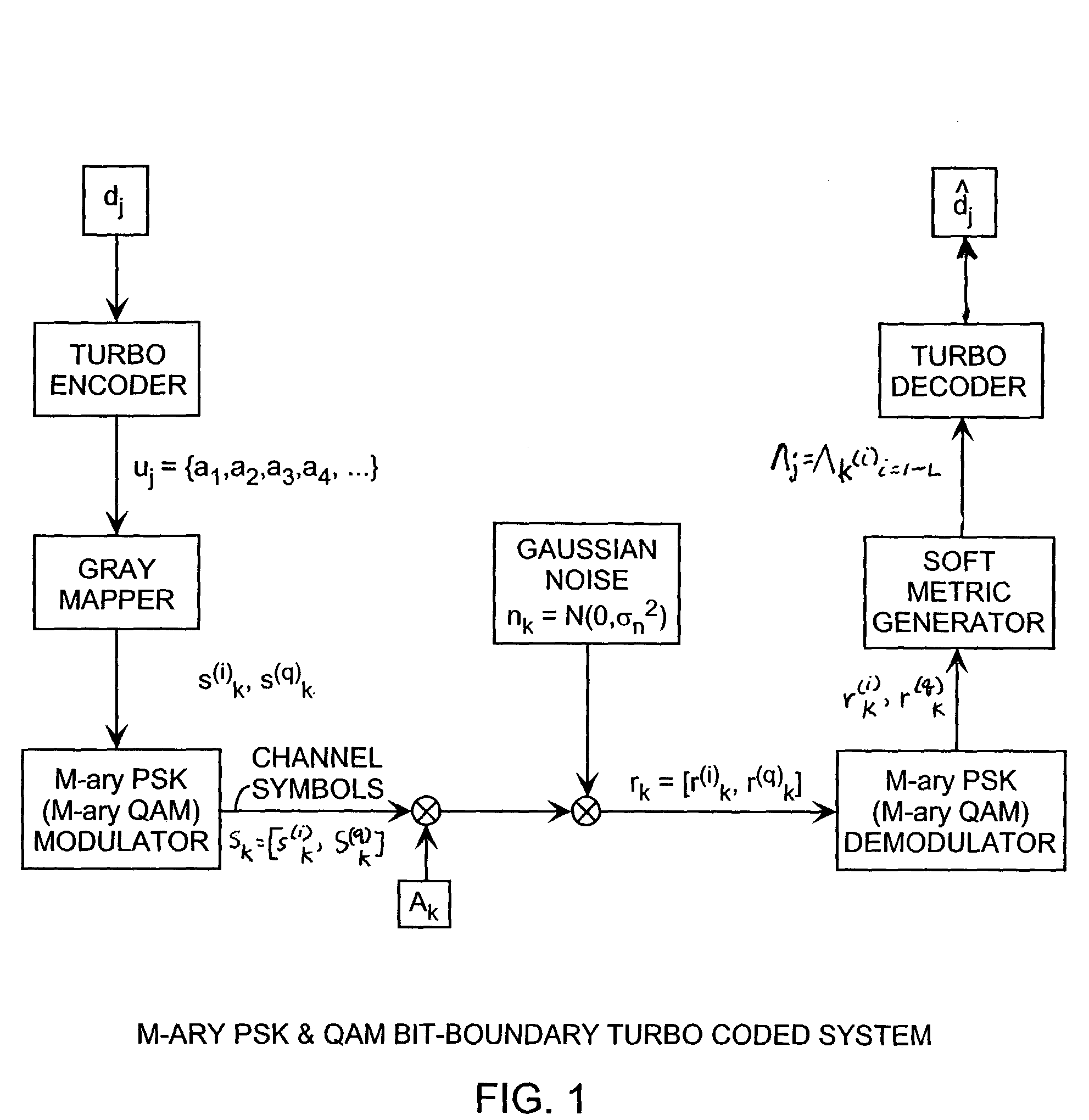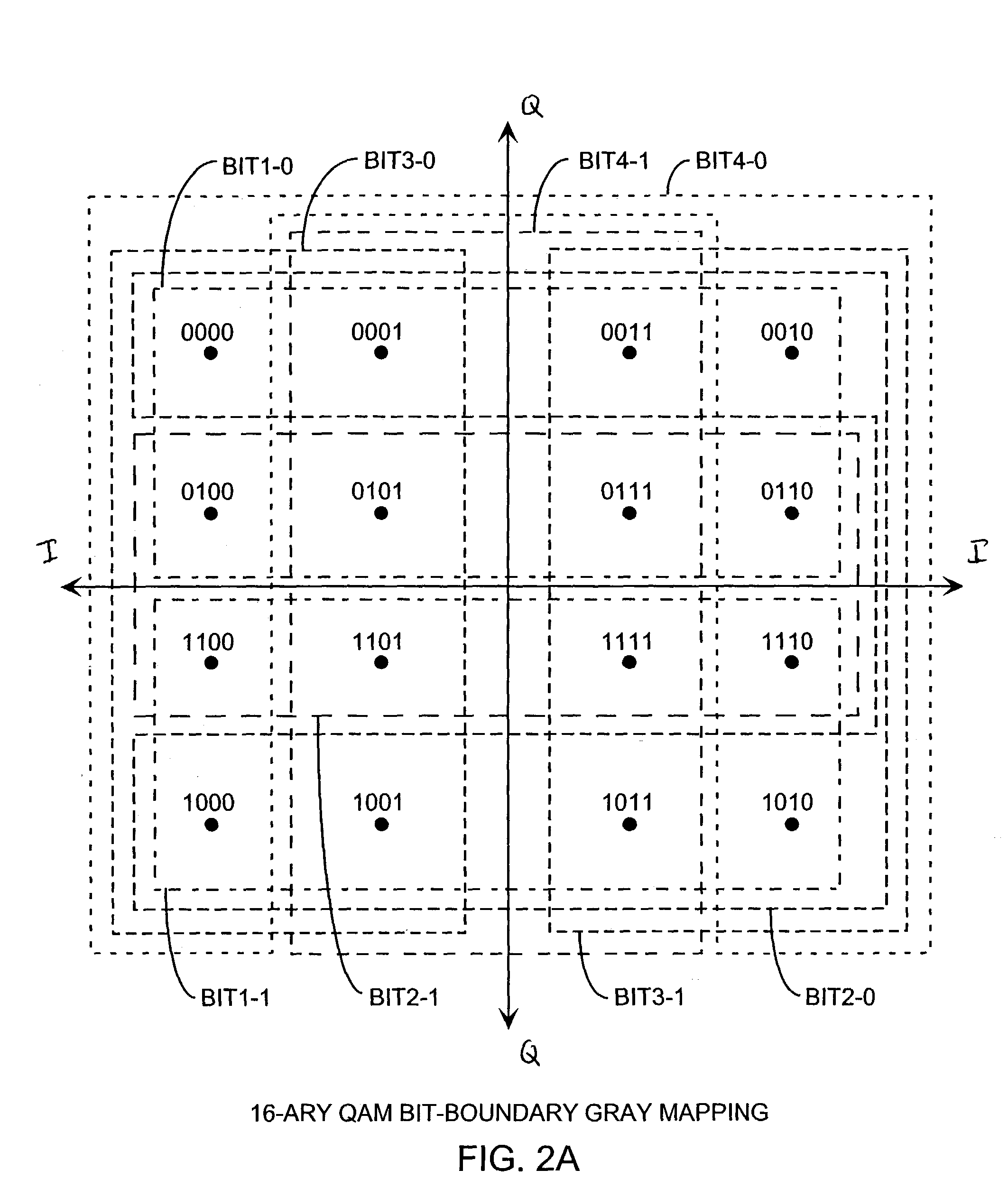M-Ary quadrature amplitude modulation (QAM) bit-boundary turbo coded system
a turbo-coded system and quadrature amplitude technology, applied in the field of turbo-coded communication systems, can solve the problems of high cost of new codec development, poor bandwidth efficiency of binary turbo codes, and degradation of bit-error-rate (ber) performance, and achieve the effect of bandwidth efficiency
- Summary
- Abstract
- Description
- Claims
- Application Information
AI Technical Summary
Benefits of technology
Problems solved by technology
Method used
Image
Examples
Embodiment Construction
[0021]An embodiment of the invention is described with reference to the figures using reference designations as shown in the figures. Referring to FIG. 1, an M-ary phase shift keying (PSK) modulation or quadrature amplitude modulated (QAM) gray-scale bit-boundary turbo-coded communication system has improved power and bandwidth efficiency for communicating an input data stream dj. The input data stream dj is fed into a conventional binary turbo encoder. The turbo encoder may include two recursive convolutional encoders concatenated in a parallel along with an internal interleaver, all not shown, on the source data bits as a conventional turbo encoder. For example, turbo encoding the original data bits dj is preferably accomplished using a rate 1 / 3 turbo encoder consisting of two recursive systematic encoders for generating polynomial (23,35)8 in a parallel concatenated configuration with an S-random interleaver that is used to separate the input bits in the recursive convolutional e...
PUM
 Login to View More
Login to View More Abstract
Description
Claims
Application Information
 Login to View More
Login to View More - R&D
- Intellectual Property
- Life Sciences
- Materials
- Tech Scout
- Unparalleled Data Quality
- Higher Quality Content
- 60% Fewer Hallucinations
Browse by: Latest US Patents, China's latest patents, Technical Efficacy Thesaurus, Application Domain, Technology Topic, Popular Technical Reports.
© 2025 PatSnap. All rights reserved.Legal|Privacy policy|Modern Slavery Act Transparency Statement|Sitemap|About US| Contact US: help@patsnap.com



